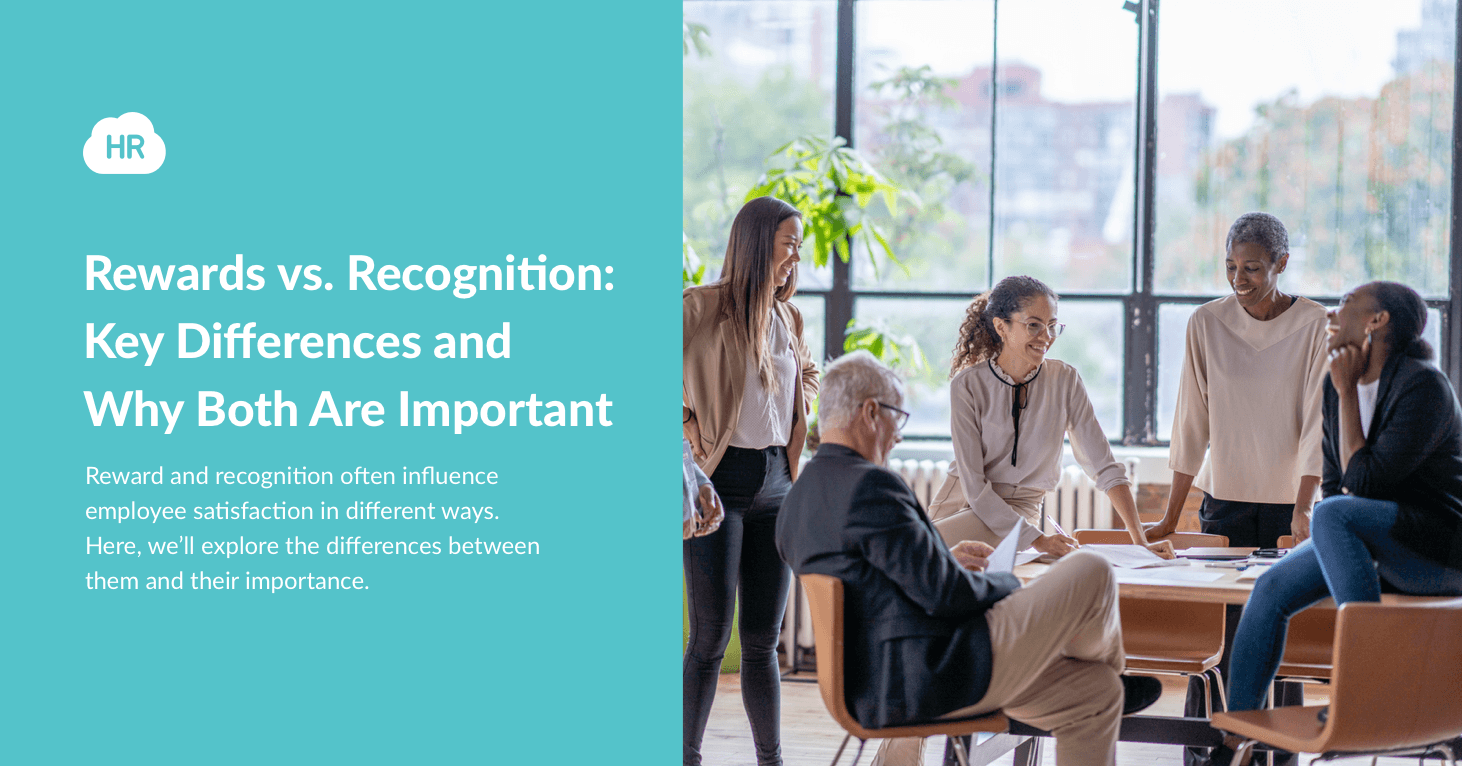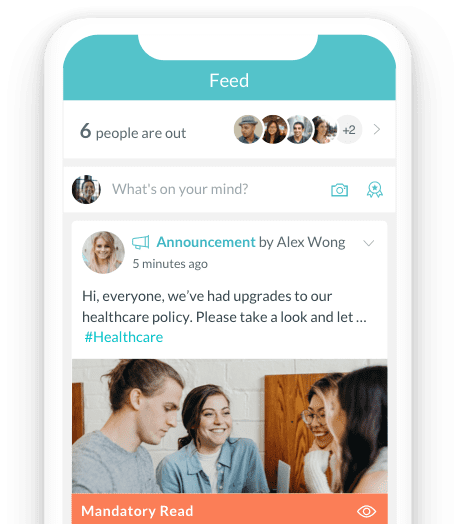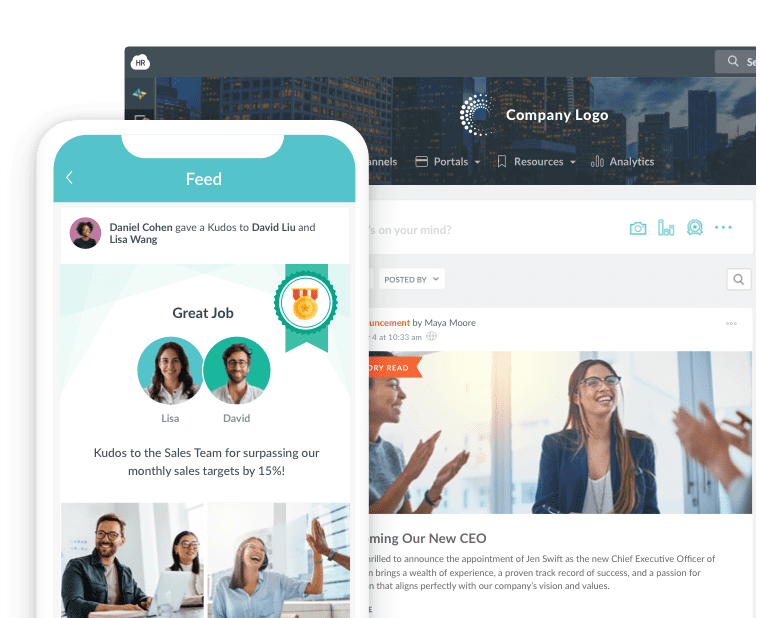Rewards vs. Recognition: Key Differences and Why Both Are Important

Job satisfaction is crucial to get optimal effort from your employees and achieve maximum productivity.
According to The Conference Board’s 2023 survey, 62.3% of US employees felt satisfaction with their jobs—the highest number since surveys started in 1987.
This number tells a story of HR teams nationwide paying more attention to achieving employee satisfaction.
Employee satisfaction extends beyond paying workers handsomely or setting up a comfortable workspace. Many other factors contribute to the employee experience, ultimately influencing job satisfaction.
Reward and recognition are two key factors. Here, we'll explore employee reward vs recognition, how they differ, and their importance for a positive employee experience.
What’s the Difference Between Employee Rewards and Recognition?
HR personnel often interchange employee rewards and staff recognition. While both concepts complement each other, they’re not the same and won’t work as substitutes for each other in your workplace.
Though employee rewards and recognition are both viable means of appreciating employees, the activities involved are usually different.
Employee Rewards
As the name suggests, rewards refer to tangible benefits you offer employees in response to their performance or achievements.
These incentives may include financial bonuses, gift cards, paid vacations, promotions, or material possessions like company-branded merchandise.
Generally, you give rewards to acknowledge the achievement of specific goals or objectives. The primary intention is to motivate employees to perform at a higher level. As such, rewards often serve as extrinsic motivators to drive desired behaviors and outcomes.
Employee Recognition
Employee recognition is a more abstract concept involving acknowledging and appreciating an employee's efforts, contributions, or achievements. While rewards usually feature an incentive, the prize in employee recognition is the action itself.
A common form of recognition involves publicly commending individuals or teams for their hard work, dedication, or positive impact. Recognition may come as verbal or written appreciation, public announcements, awards, or symbolic gestures like a round of applause.
It’s important to remember that recognition should come from multiple directions. As an employer or manager, you should make sure you celebrate your team's good work. But, alongside this, you should also use tools like recognition software to provide a public feed where fellow workmates can show appreciation to each other.
Unlike rewards, recognition focuses on intrinsic motivation by fulfilling the basic human need for validation and a sense of belonging.
Other Differences Between Employee Reward and Recognition
-
Rewards feature tangible incentives, while recognition is mostly abstract.
-
Rewards are conditional and often transactional because you give them in response to an action or achievement. Conversely, recognition is relational because you give it to appreciate the individual (you don’t need a specific reason to do it).
-
Rewards usually appeal in an economic sense and have physical utility, while recognition appeals in an emotional sense and offers a positive psychological impact.
Inherently, these concepts sound like two sides of the same coin, and, in most cases, one often precedes the other. Remember, however, that neither is a substitute for the other, and it’s important to give adequate rewards and recognition to your employees where due.
The Importance of Employee Rewards
Rewards enhance employee motivation, engagement, and overall job satisfaction.
Increased Motivation
Rewards serve as powerful motivators for employees. Giving tangible incentives to your workers when they achieve a predetermined objective indicates that you want them to continue creating such results.
In addition, rewards also serve as compensation for effort and time invested into an activity.
In the future, the expectation of an incentive will encourage your employees to recreate a result, even if it means going the extra mile.
Improved Productivity
Using potential rewards as a motivator often translates to increased performance from employees. And, since you set the incentive, you determine what operational goals employees must achieve to receive them.
This makes it easy to help employees achieve more for the company; you only need to set goals in line with the productivity metrics you want them to hit.
Also, when employees feel valued and know you’ll acknowledge and reward their hard work, they’re more likely to invest time and energy into their tasks. The result of this is increased productivity and efficiency in the workplace.
Increased Employee Engagement
Nothing gets staff entrenched in work culture like the promise of a reward for their actions. Employee rewards contribute to higher levels of staff engagement, among other things.
Engaged employees are committed to their work, passionate about their roles, and aligned with organizational goals.
Even when they hit roadblocks, engaged staff are more motivated to circumnavigate these obstacles to reach their goal quicker. They have a clear picture of the prize and won’t let anything stop them from getting it.

Why Employee Recognition Matters for the Employee Experience
Here’s why you need employee recognition initiatives as part of your workplace culture.
Employees Feel Valued and Appreciated
While a reward is an extrinsic motivator, recognition appeals to emotions and the intrinsic human desire to be noticed. As such, it makes employees feel welcome, wanted, and needed.
This fosters a sense of belonging and camaraderie, making workers feel like they’re contributing significantly to a common cause. For example, if you use recognition software, it has the double effect of recognizing employees' hard work whilst fostering an environment of appreciation and positivity.
Knowing their input is crucial and also makes employees self-motivated to do more.
Makes Employees Take Pride in Their Contributions
Employee rewards target the human ego, massaging the average person’s pride. When you give due recognition to staff, you give them the ultimate respect.
Naturally, they’ll then take greater pride in their work, growing confident in their workplace contributions. They’ll also have more conviction in their actions going forward.
The need to protect their ego can also spur employees to go the extra mile in the future.

 Try Out Our
Try Out OurEmployee Engagement Software For Free


Best Practices for Leveraging Employee Rewards & Recognition Programs
Employee rewards and recognition programs are powerful tools for motivating and engaging workers. Here are some best practices to leverage these programs and significantly impact satisfaction.
Set Clear Objectives and Criteria
Before launching a rewards and recognition program, establish clear objectives and criteria.
Define the behaviors, achievements, or milestones you intend to recognize and reward. Ensure these criteria align with the company's values, goals, and desired outcomes.
Clear guidelines will help create a fair and transparent program that employees can understand and work toward.
Practice Timely and Specific Recognition
Recognition loses its impact when it’s delayed or generalized, so provide timely and specific recognition for employee achievements or contributions.
Acknowledge individual employee efforts as soon as possible, and be specific about what they did well.
For example, don’t just say "Good job." Instead, say "Excellent work on completing the project ahead of schedule. Your attention to detail, teamwork, and remarkable use of the virtual telephone system were instrumental in its success."
Practice Inclusive and Fair Distribution
Ensure that rewards and recognition are distributed fairly and inclusively across the organization.
Recognize achievements at all levels, from frontline employees to managers and executives. Avoid bias and ensure the program encompasses all workers.
Celebrate Milestones and Achievements
Apart from day-to-day recognition, celebrate significant milestones and achievements memorably.
Organize special events, ceremonies, or team-building activities to honor major accomplishments or project completions.
Celebrations create a sense of pride, foster camaraderie, and encourage a culture of excellence.
Employee Reward and Recognition Are Both Important
Employee rewards and recognition both matter. They increase motivation and improve productivity, translating to better job satisfaction, employee engagement, and employee retention.
The difference is that employee rewards are more physical, often taking the form of tangible benefits. Conversely, employee recognition is abstract, appealing to employee emotions and psychology.
By implementing both employee recognition and reward programs, you’ll create a supportive and rewarding work environment for your staff. Leverage the recommendations above for the best results.
Is Your Company's Culture
Working Against You?
culture with our short quiz.
Author Bio:
This article is written by a marketing team member at HR Cloud. HR Cloud is a leading provider of proven HR solutions, including recruiting, onboarding, employee communications & engagement, and rewards & recognition. Our user-friendly software increases employee productivity, delivers time and cost savings, and minimizes compliance risk.
Keep Reading
Balancing Technology and the Human Touch in Employee Engagement
Companies are taking employee engagement very seriously because it is one of the ways of
Building Strong Teams: The Power of Team Bonding Exercises
Never overestimate the power of collaboration as a core element of effective team

